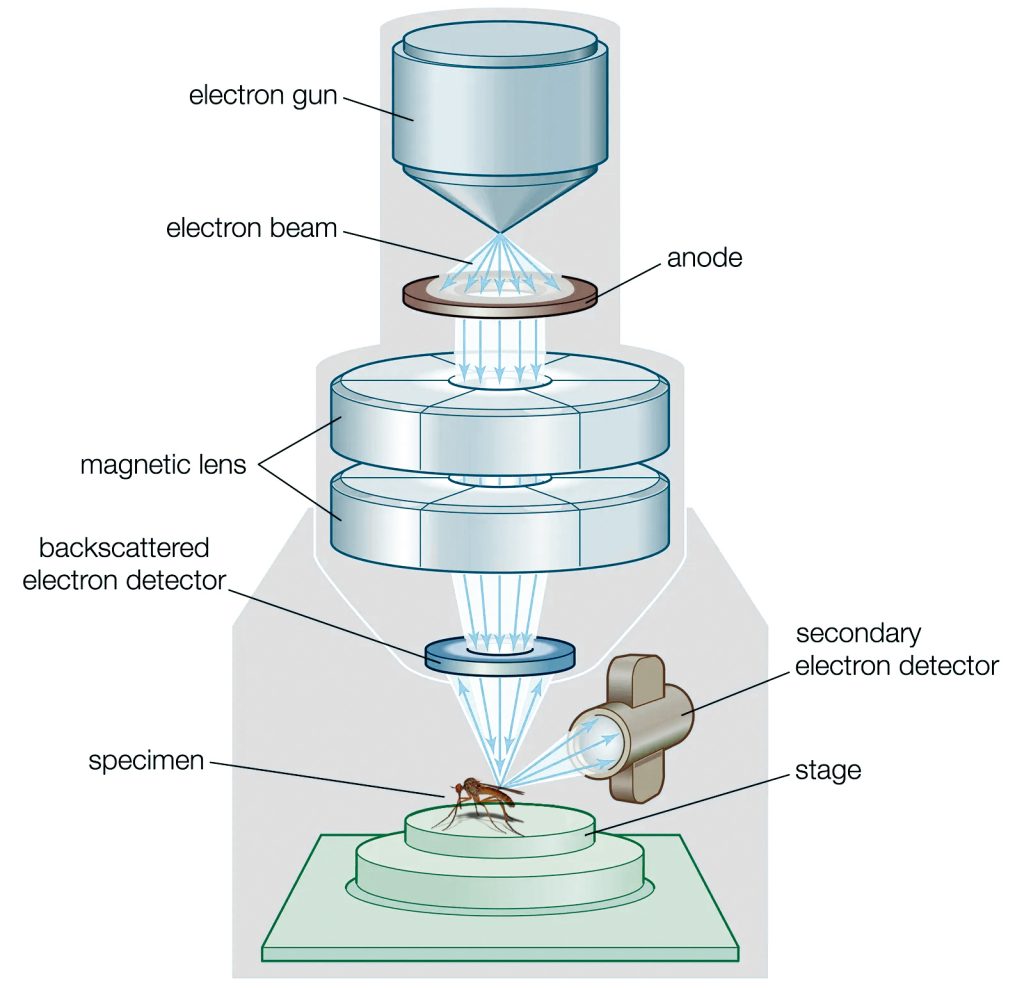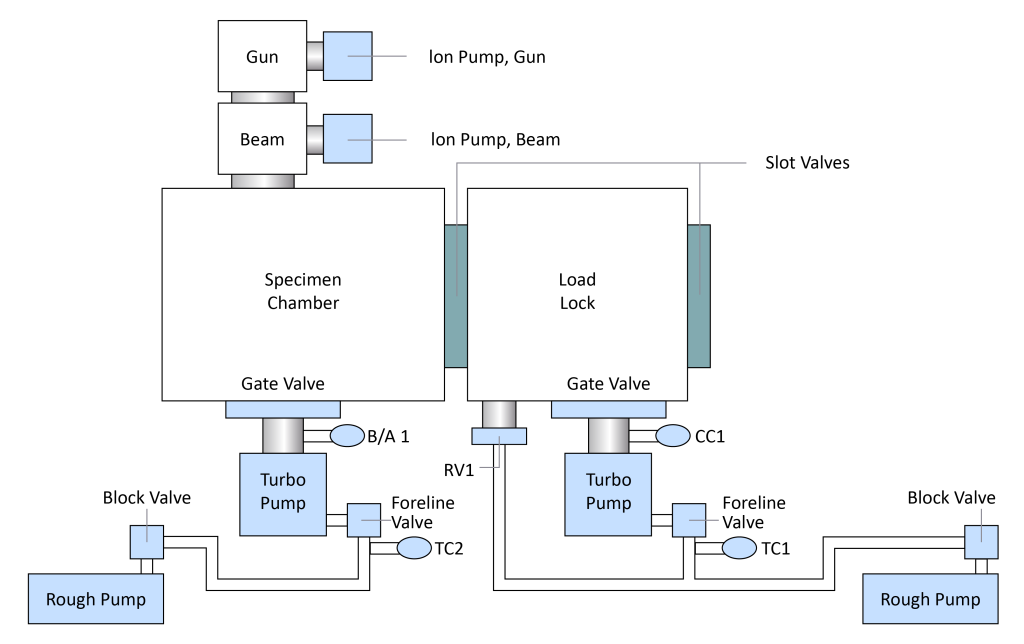Limited by the physical properties of light, the maximum resolution that an optical microscope can achieve is around 200 nm (Abbe limit).
In the 1920s and 1930s, in order to see the fine structure (<100 nm) inside organic cells (nuclei, mitochondria, etc.), people developed Transmission Electron Microscopy (Transmission Electron Microscopy), which is based on ordinary microscopes. Using a focused electron beam instead of visible light to “see through” the specimen greatly improves resolution.
Introduced in the 1960s, the Scanning Electron Microscope uses a beam of high-energy electrons to scan a sample to image it. The electrons interact with the atoms that make up the sample and can generate signals that contain information about the sample’s surface topography, composition, and other information.
How an Electron Microscope Works

Whether it is TEM or SEM, images are obtained by irradiating samples with electron beams, and its main parts include electron sources (electron guns), electron lenses, scanning coils, detectors, etc. These components are usually installed in a high-vacuum chamber from top to bottom. inside the chamber (lens barrel).
Electron gun (also known as electron source): Usually located at the top of the lens barrel, it emits electrons and forms a uniform velocity electron beam. The electron beam is focused downwards through an electron lens.
Electron lens: One of the most important components in the electron microscope barrel, it uses a space electric field or magnetic field symmetrical to the axis of the barrel to deflect the electron trajectory to the axis to form a focus, and its function is similar to that of a glass convex lens to focus the beam, so called an electronic lens. Most modern electron microscopes use electromagnetic lenses, which focus electrons through a strong magnetic field generated by a very stable DC excitation current passing through a coil with pole shoes.
Scan Coils: Electromagnetic coils that control and fine-tune the position of the beam.
Detector: A focused electron beam illuminates the sample on the sample stage and generates signals, which are detected by the detector and converted into an image.
The Importance of Vacuum for Electron Microscopy
Vacuum plays a very important role in electron microscopy. When the electron microscope is working, the entire electron beam path and the sample to be analyzed will be placed in a high vacuum environment. If the vacuum is not high enough, an interelectrode discharge may occur between the grid and the anode of the electron gun and the filament will be blown. Collisions with trapped air particles also cause scattering, which can prevent electrons from the electron beam from reaching the sample, or otherwise distort the analysis.
Vacuum Requirements for Electron Microscopes
In order to make the electrons in the electron beam move as unhindered as possible, the vacuum degree of the electron microscope usually needs to reach a high vacuum of the order of 1E-7 mbar, or even an ultra-high vacuum of the order of 1E-10 mbar; in addition to the degree of vacuum, the vacuum pump works The vibration level at the time is also critical. Due to the small cross-section of the electron beam, the positioning accuracy on the sample is very high, and this accuracy can only be maintained in an environment with an extremely low vibration level; in addition, in order to avoid oil vapor from polluting the sample or the internal components of the microscope, it is best to use an oil-free microscope. Dry vacuum pump.
Typical Vacuum System Configuration
The figure below is an example of a SEM system. From top to bottom on the left side are the lens barrel equipped with electron gun and electron lens and the sample chamber for placing samples, and the right side of the sample chamber is a load lock. The sample to be analyzed is placed in the inlet and outlet sample chamber, and the inlet and outlet sample chamber is pumped to a certain degree of vacuum, and then the sample is transferred to the sample chamber for analysis. Electron microscopes with entry and exit chambers can maintain the sample chamber at a high vacuum, thereby shortening the preparation time for each inspection, increasing sample throughput, and reducing the cost of a single inspection.

The lens barrel of the SEM is equipped with two ion pumps (Ion Pump), and two sets of molecular pump (Turbo Pump) units and multiple valves (Valve) are configured in the sample cavity and the sample chamber. Gauge to detect the vacuum degree at different positions.